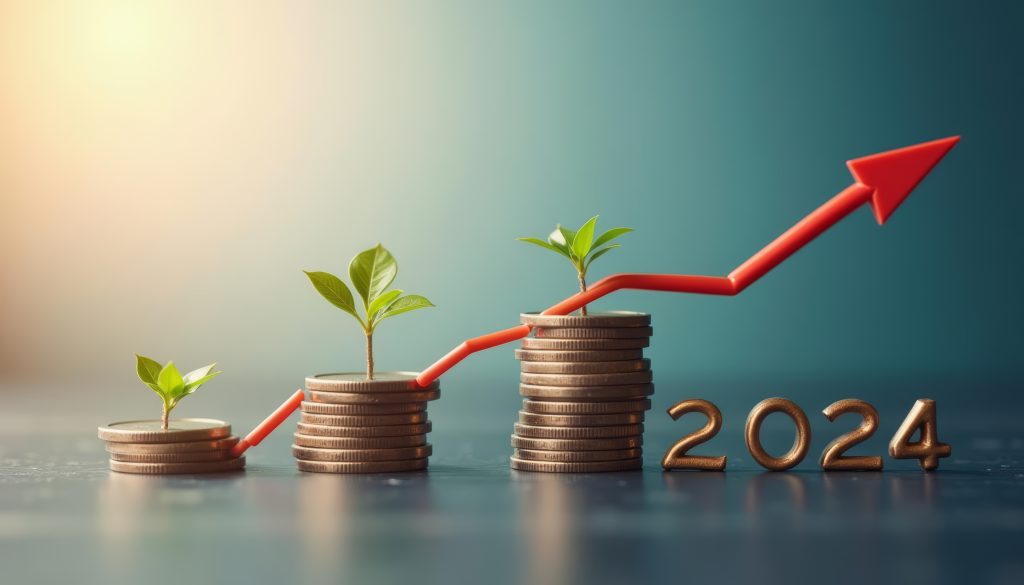Economic growth withstood inflation, high interest rates and other challenges in 2024 and should continue to show strength in 2025, according to analysis and commentary from National Retail Federation (NRF) Chief Economist Jack Kleinhenz.
“The U.S. economy ended 2024 on a high note, and the outlook looks promising for 2025,” Kleinhenz said. “Recent performance shows the economy is on solid footing and has been growing at a steady pace and above its historical average. The labor market is healthy, unemployment is low, inflation has fallen almost to the Federal Reserve’s target even though it remains somewhat sticky, and the direction of interest rates remains lower.”
Kleinhenz’s comments came in the January edition of the NRF’s Monthly Economic Review, which reported that the 2024 gross domestic product was on track to grow 2.7 percent over 2023, based on results for the first three quarters and data from the first two months of the fourth quarter. GDP is expected to grow between 2.0 percent and 2.5 percent in 2025, although Kleinhenz also said the range of uncertainty is wide and this estimate could change.
“I don’t want to get ahead of our annual forecast, but there is good reason to expect healthy economic growth in 2025 even though its shape will depend upon a lot of moving parts,” Kleinhenz said. “Key factors could include changes to trade, immigration, regulation, tax and spending policies, and their impact on economic activity, but the resilience of the U.S. consumer should hopefully remain part of the dominant narrative.”
The past year “was marked in large measure by the impressive resiliency of the consumer and a sturdy labor market, with consumer spending supported by low unemployment and wage gains that outpaced inflation even as employers slowed hiring,” Kleinhenz said.
The 1.8 million ongoing consumer claims for unemployment insurance as of the week ending December 21 were just 40,000 higher than a year earlier, and new filings fell from 219,000 that week to 211,000 the following week. Average hourly wages were up 4.4 percent on an annualized three-month average in November.
Year-over-year inflation, as measured by the Personal Consumption Expenditures Price Index, followed by the Federal Reserve, fell to 2.4 percent year-over-year as of November. That was close to the Fed’s goal of 2 percent and substantially less than the 3.9 percent year-over-year wage increase measured by the quarterly Employment Cost Index.
Consumer spending on goods and services grew 5.5 percent year-over-year, unadjusted for inflation in November and December combined, while disposable personal income was up 5.2 percent year-over-year, helping boost consumer purchases.
Core retail sales as defined by the NRF, excluding auto dealers, gas stations and restaurants, were up 4 percent year-over-year on a three-month moving average as of November and up 3.8 percent for the first 11 months of the year. While December figures will not be released until next week, spending is on track to meet or exceed the NRF’s projection for sound holiday shopping season growth of 2.5 percent and 3.5 percent over 2023.
There was a disconnect between strong consumer spending and weak consumer confidence throughout 2024, with shoppers still concerned about high prices even though most inflation is now in services rather than goods. However, optimism is increasing, with the University of Michigan Consumer Sentiment Index rising 3.1 percent to 74 in December—its fifth consecutive monthly increase and the highest level since last April.
Following a quarter-point reduction in interest rates in December, the Fed is attempting to “thread a needle of lowering rates but at a pace that won’t undo recent progress on inflation,” Kleinhenz said. Consequently, Fed officials have indicated that they are likely to lower rates by only half a point in 2025 rather than the previously expected full percentage point.
Image under license with AdobeStock
















